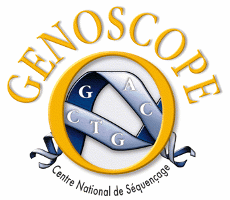AphanoDB is a data bank for Aphanomyces ESTs developed at the UMR 5546 CNRS-Université Paul Sabatier Toulouse III (France).
Aphanomyces project :
The Aphanomyces project is one of the objectives of the research group in cooperation with the European Grain Legume FP6 project devoted to the implementation of transcriptomic and genomic data on the molecular interaction of Aphanomyces euteiches with Legumes.
First objectives of the research :
The development of an extensive EST database for Aphanomyces (AphanoDB).
The analysis of transcriptomic analyses based on macroarray & microarray derived from ESTs collection.
Why a Aphanomyces sequence collection ?
The oomycetes are filamentous microorganisms that have
been classified within the fungi for a long time, but they
are phylogenetically distant from the Kingdom fungi
and are more related to diatoms and brown algae. Because of
their original taxonomic position and their biological
properties (motile spores, cellulosic cell walls, specific
metabolism, etc.), the mechanisms underlying pathogenicity
of the oomycetes cannot be directly
deduced from those of the true fungi, and are poorly
understood.
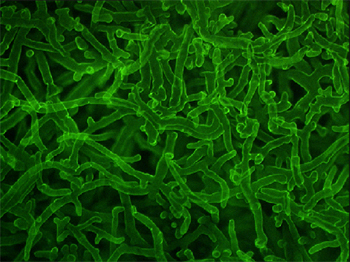
FITC-labelled hyphae
(Ilham Badreddine, 2006)
|
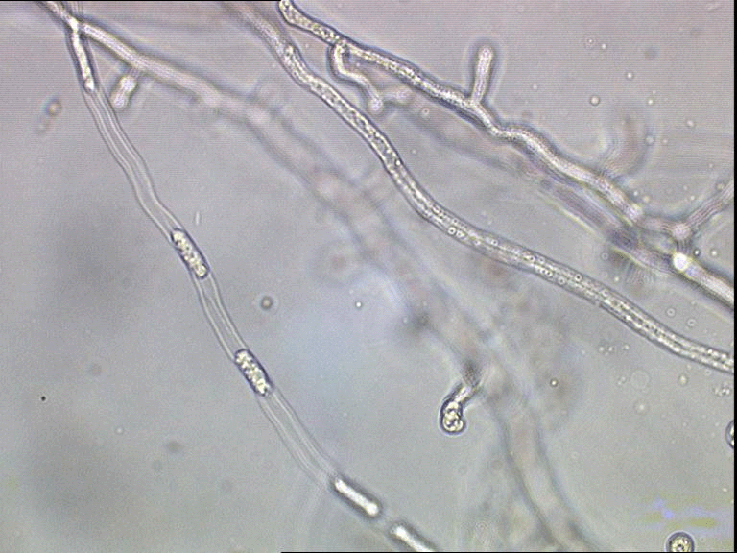
Vegetative and sporogenic hyphae
(Arnaud Bottin 2005)
|
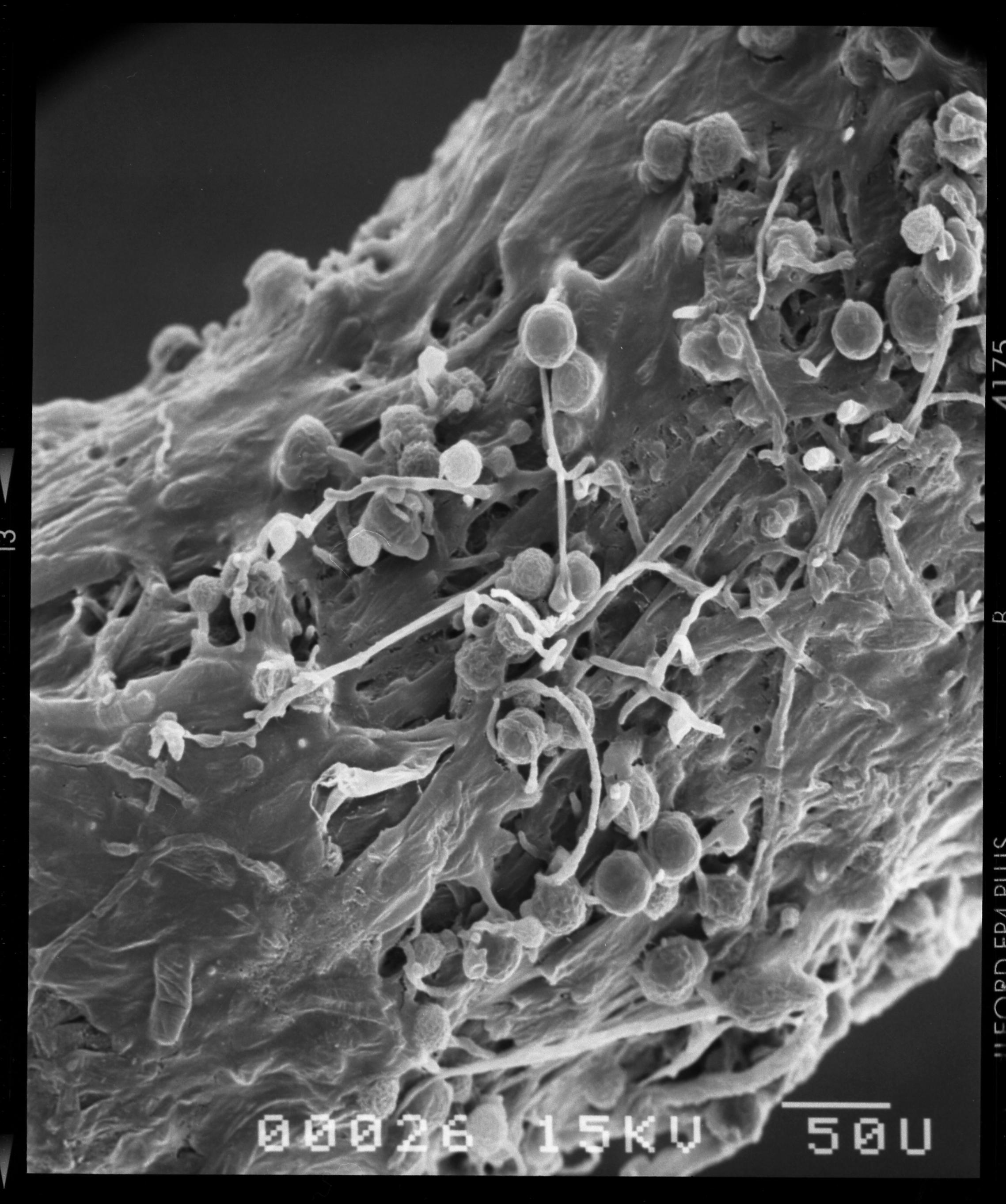
Cysts germinating on M. truncatula roots
(C. Jacquet, 2006)
|
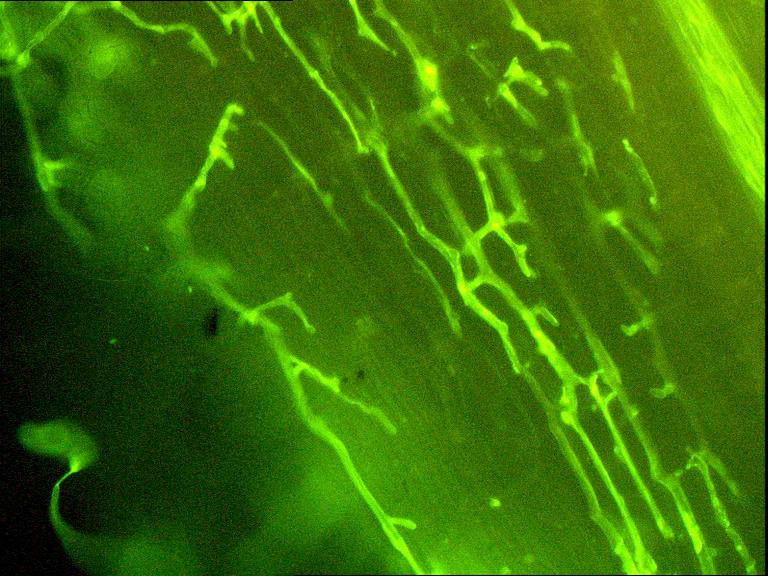
FITC-labelled hyphae in M. truncatula roots
( Ilham Badreddine, 2006)
|
Comparison of sequence data from phytopathogenic oomycetes
(Phytophthora) and true fungi (Magnaporthe
grisea, Fusarium graminearum, Botrytis cinerea,
etc.) have confirmed this great divergence.
Recently, the genome sequencing of three exclusively
phytopathogenic oomycetes from the Peronosporales family
(Phytophthora) has been undertaken in the United States. The
genus Aphanomyces, a member of the Saprolegniales, occupies a
unique position within the oomycetes. Aphanomyces euteiches
is a major parasite of several legumes including pea, alfalfa and
clover, and is a threat to the production of proteins of plant origin,
for which there is an ever-increasing demand.
The acquisition of sequence data from
Aphanomyces euteiches is therefore justified by its
distinct taxonomic position, its host range and its impact on
agriculture. Furthermore, the capacity of A. euteiches to
infect the model legume Medicago truncatula reinforces the
relevance of this microorganism for the study of plant-parasite
interactions.
Sequencing of ESTs libraries.
In collaboration with the Génoscope (Evry, France),
a project concerning the sequencing of A. euteiches cDNA was undertaken ( Génoscope Project Aphanomyces).
The objective of the project is to produce a collection of Aphanomyces euteiches ESTs by 5' sequencing of two cDNA libraries (10,000 reads for each one) constructed from mRNA from a mycelium cultivated
under two different conditions. This will be followed by the functional analysis of candidate genes selected on the basis of their expression pattern and/or sequence similarities to known genes.










